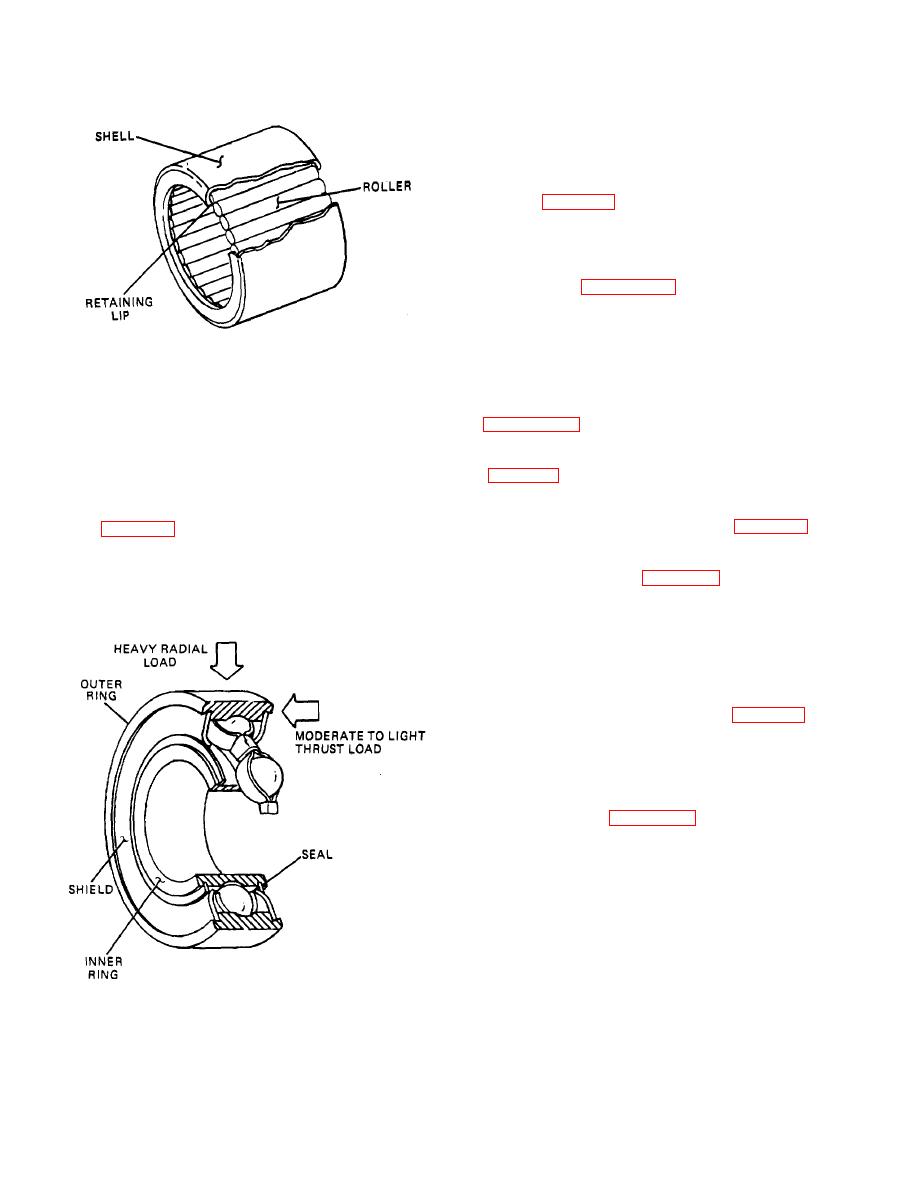
| Tweet |

Custom Search
|
|

|
||
 TM 9-8000
19-11. Oil Seals. Oil seals used in the automotive
assembly are designed to prevent leakage be- tween
rotating and nonrotating members. Two basic types of oil
seals are used on today's vehicles. Each Is discussed
below.
a. Synthetic Rubber Seals. The synthetic rubber
oil seal (fig. 19-14) is the most common type of oil seal.
It is composed of a metal case used to retain its shape
and maintain rigidity. A rubber element Is bonded to the
case, providing the sealing lip or lips that rub against the
rotating shaft. Different types of oil seal designs are
illustrated in figure 19-14. A coil spring, some- times
called a garter spring, also is used to hold the rubber
element around the shaft with a con- trolled amount of
force. This allows the seal to conform to minor shaft
Figure 19-12. Typical Needle Bearings.
runout. Some synthetic rubber seals fit into bores
mounted around the shaft. This type Is generally a split
clutches, transmissions, universal joints, transfer cases,
design and does not require a metal case or garter
or rear axles. If these assemblies are lubricated in
spring. Some oil seals rely on pressure to aid In sealing.
accordance with the specifications as set forth in the
applicable technical manual, and with the lubricant
seals. Internal pressure developed during operation
prescribed for each, the bearing requirements will be
forces the sealing lips tighter against the rotating shaft
satisfied.
against fluid pressure from one direction. Leather also is
used as a lip seal. In this configuration, the seal Inside
sealed at the factory and require no further lubrication. A
diameter is smaller than the shaft (fig. 19-14). As the
shield (fig. 19-13) is used to contain the lubricant and
shaft is Installed, the seal bows outward to form a lip
prevent foreign matter from entering the bearing. These
seal.
bearings generally are used when Inherent lubrication is
b. Wick Seals (Fig. 19-15). The wick seal made
not available or a dirty operating environment must be
of graphite-impregnated asbestos wicking sometimes Is
overcome
used to control oil leakage. This seal conforms to the
recess In which it Is Installed. When using this type of
seal, a knurled finish is used on the rotating shaft. The
oil Is contained between the knurls and seal, which rub
together. As the shaft rotates, the oil is driven back by the
propeller effect of the seal and knurl finish. An oil slinger
sometimes Is used with wick seals (fig. 19-15). The oil
slinger is a raised washerlike area on the shaft. As oil
meets the slinger, it is propelled outward by centrifugal
force. A catch trough then Is used to collect the oil and
return it to the sump.
known as static seals, are used to form pressure-tight
Joints between stationary members. They usually are
made of a deformable material In the shape of a sheet or
ring, which
Figure 19-13. Typical Sealed Bearings
TA233660
19-11
|
||
 |
||